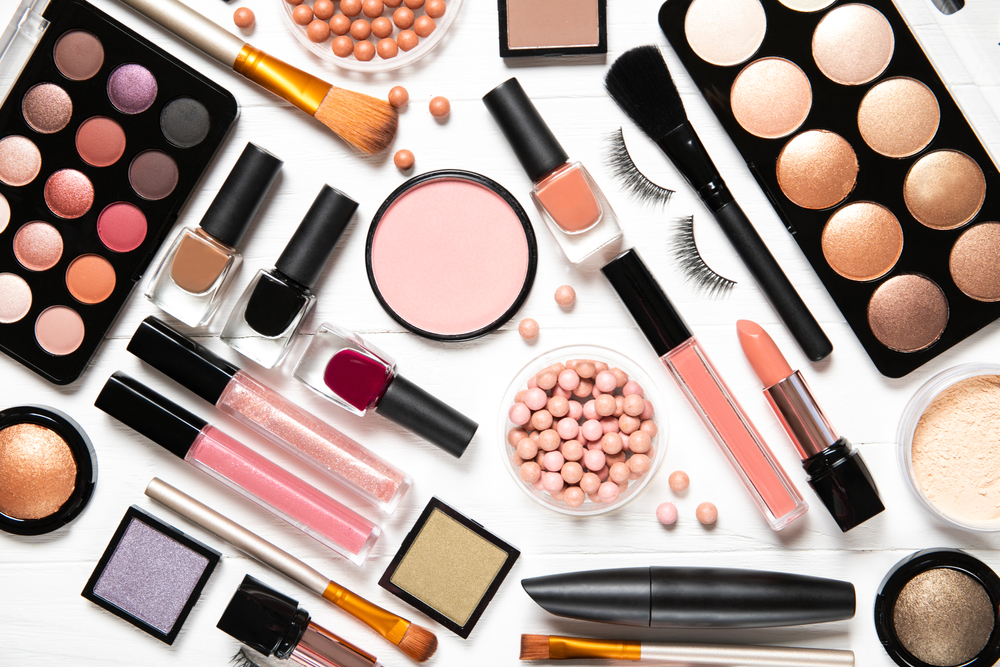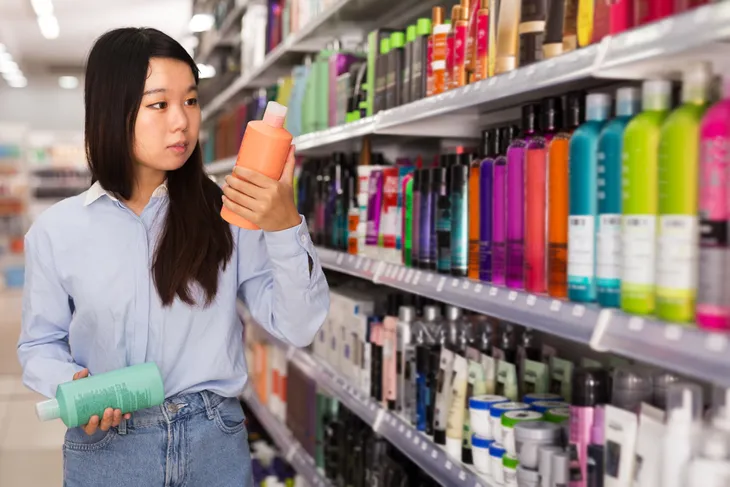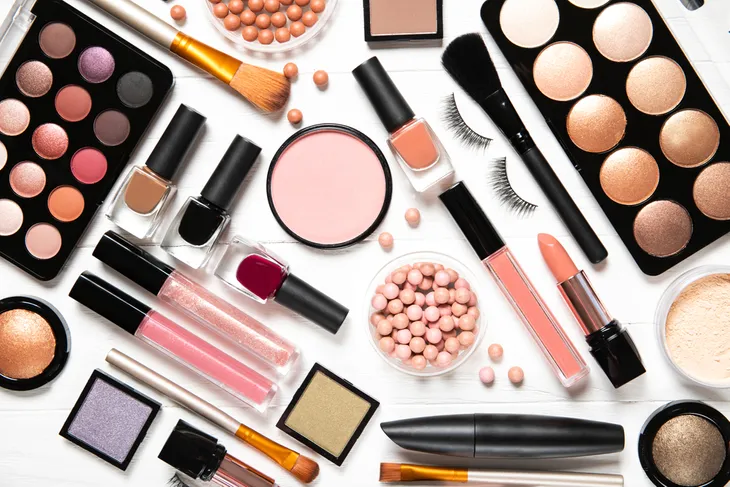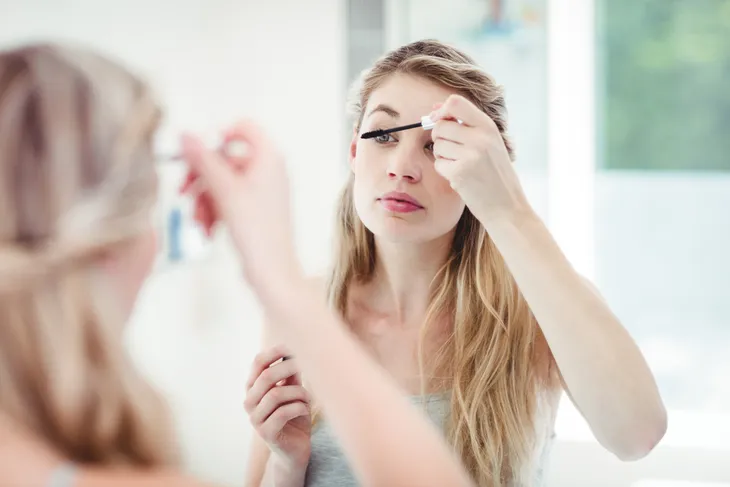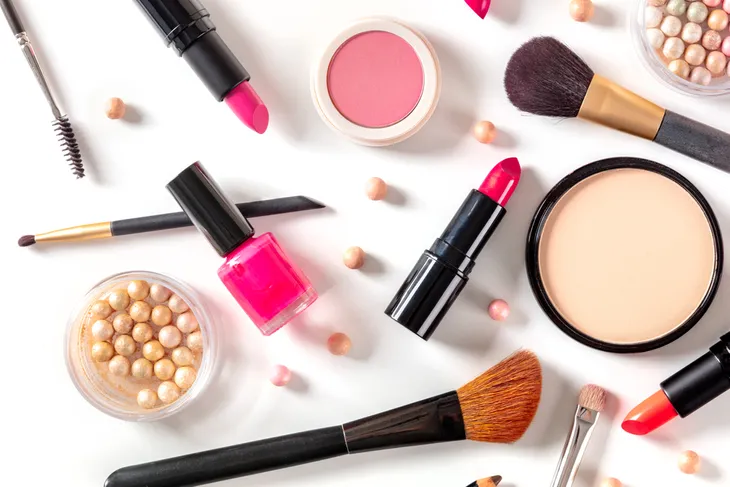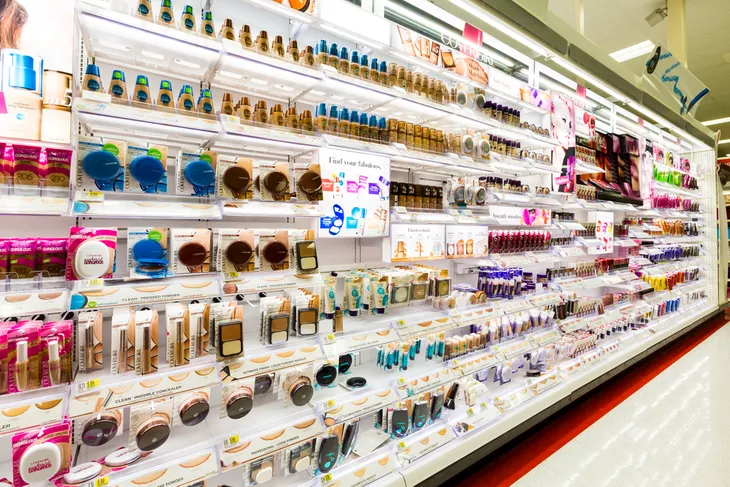- Women apply an average of 168 chemicals to their bodies every day between all of their cosmetics.
- Cosmetics have little government oversight, so it’s largely up to consumers to look out for themselves.
- Product labels can be difficult to decipher, but here are several ingredients you may want to avoid.
The average woman uses 12 different cosmetics every day, according to the Environmental Working Group (EWG). There’s mascara, lipstick, fragrances, conditioner, body wash, and so on. Between the 12 cosmetics, the average woman applies 168 chemicals to their body every day.
And according to the source, the average man uses six cosmetics daily, containing 85 chemicals. Research suggests that exposure to some cosmetic ingredients can be harmful. But making heads and tails of each product’s long list of chemicals can be tricky.
That’s why we’ve rounded up ingredients you may want to avoid to reduce your chemical exposure. Keep reading to learn more about potentially toxic chemicals in cosmetics.
Are Cosmetics Tested for Safety?
While you might assume the cosmetics you see in stores are adequately tested, that isn’t necessarily the case. Unfortunately, there is little government oversight. According to PBS NewsHour, the safety regulations for cosmetics in the United States haven’t been updated since 1938.
Cosmetics aren’t subject to an FDA safety review. In fact, “Manufacturers are not required to register products or list their ingredients with the FDA before putting them on the market,” according to the source. That’s why it’s important to keep an eye on cosmetic labels to look for toxic ingredients.
What Products Fall Under Cosmetics?
So, what products are considered cosmetics? If you think the term is limited to makeup, then think again. As it turns out, many things you might consider personal care products are cosmetics. For example, the FDA says some toothpastes, deodorants, and shampoos are cosmetics.
The term cosmetic also extends to products like skin moisturizer, perfume, nail polish, and hair color. However, the source says some personal care products are cosmetics and drugs. For example, some dandruff and acne products are both. Generally, drugs need to get FDA premarket approval.
Ingredients To Avoid
According to PBS NewsHour, the FDA believes most cosmetics sold in the United States are safe. But that doesn’t mean it isn’t a good idea to read product labels carefully. Here are some ingredients to watch out for in cosmetics:
- Formaldehyde
- Coal Tar
- PFAS
- Ethanolamines
- Fragrance
- Metals
- BHA and BHT
- Parabens
We’ll dig into the details of each of the above ingredients next. So, keep reading to learn why you might want to avoid them.
Formaldehyde
The National Cancer Institute (NCI) says some agencies classify formaldehyde as a human carcinogen. Despite that classification, formaldehyde is a relatively common ingredient in cosmetics. For example, Byrdie says formaldehyde can be found in nail polish, hair straightening products, and eyelash glue.
Formaldehyde is used in some cosmetics to help prevent bacteria growth, according to WebMD. In addition to formaldehyde, the source says it may be called other names like DMDM hydantoin, polyoxymethylene urea, and sodium hydroxymethylglycinate.
Coal Tar
“Coal tar is a by-product of bituminous coal,” according to Medical News Today. A variety of cosmetics use it. For instance, American Testing Lab (ATL) and CLEARlife say some hair dyes, lotions, eyeshadows, lipsticks, and shampoos contain coal tar.
WebMD says it may be listed as Phenylenediamine or PPD in an ingredient list. While Medical News Today says some dermatologists prescribe coal tar to treat skin conditions, it can cause side effects like rashes and brittle hair. And California requires coal tar products to have a cancer warning.
PFAS
PFAs are fluorinated chemicals linked to cancer and other serious health issues, according to Byrdie. Since PFAs are water repellents, the source says waterproof mascaras and eyeliners commonly contain them. Additionally, WebMD says some lipsticks and face products contain PFAs.
A recent study that tested cosmetics found high fluorine levels in several products. For instance, 62-percent of the 42 liquid lipsticks they analyzed had high levels. And 82-percent of the 11 waterproof mascaras they screened had high levels.
Ethanolamines
While animal tests found a link between certain ethanolamines and cancer, WebMD says the study didn’t establish a link between them and cancer in humans. However, Byrdie says ethanolamines are allergens. As a result, they irritate some people’s skin.
The source says other names for ethanolamines include monoethanolamine (MEA), diethanolamine (DEA), and triethanolamine (TEA). So, you might see those names on product labels instead. The source says some foundation, mascara, and skincare products contain ethanolamines.
Fragrance
Because fragrance ingredients are considered “trade secrets,” WebMD says companies aren’t required to disclose them. That makes “fragrance” an umbrella term for hundreds of chemicals that might not be listed on the product label. Perfumes aren’t the only cosmetics that contain fragrance ingredients.
For instance, some moisturizers and body washes have them. The source points out that cosmetic companies are expected to ensure the safety of the ingredients. But the EWG says fragrance ingredients can contribute to allergies, respiratory issues, and dermatitis.
Metals
You might not expect to find metals in cosmetics. But ATL says many cosmetic products contain an array of metals. For example, the source says some products have lead, mercury, and aluminum. Products that can have metals include nail polish, lipstick, and foundations.
While metals are sometimes intentionally added to cosmetics, the Campaign for Safe Cosmetics says other times they’re contaminants. So, the source recommends looking for lead acetate, chromium, hydrogenated cottonseed oil, thimerosal, and sodium hexametaphosphate on labels.
BHA and BHT
WebMD says BHA and BHT act as preservatives. So, they can help extend the shelf life of products. But you may want to avoid them. According to the American Cancer Society (ACS), the National Toxicology Program says BHA is a possible carcinogen.
And the David Suzuki Foundation (DSF) says, “long-term exposure to high doses of BHT is toxic in mice and rats.” A lot of cosmetics have BHA and BHT, according to ATL. For example, the source lists makeup, creams, deodorant, and sunscreen.
Parabens
HuffPost says parabens can help “prevent the growth of bacteria, mold and yeast in cosmetic products.” However, they’re another preservative you may want to avoid. According to Byrdie, trace amounts of it have been found in breast cancer tissue samples.
The source says the FDA considers parabens safe since cosmetics only use a small amount. Although, it’s worth mentioning that parabens can irritate the skin. So, those with sensitive skin may especially want to look out for parabens on product labels.
The Takeaway
Should you throw away cosmetics with these ingredients? Everyone has their own comfort level. So, we recommend continuing to read up on each one. That way, you can figure out what’s right for you. Since there’s a lack of government oversight, it’s good to dig into the details yourself.
As they say, knowledge is power. Now you can take your understanding of toxic ingredients and make a more informed decision the next time you shop for cosmetics.
